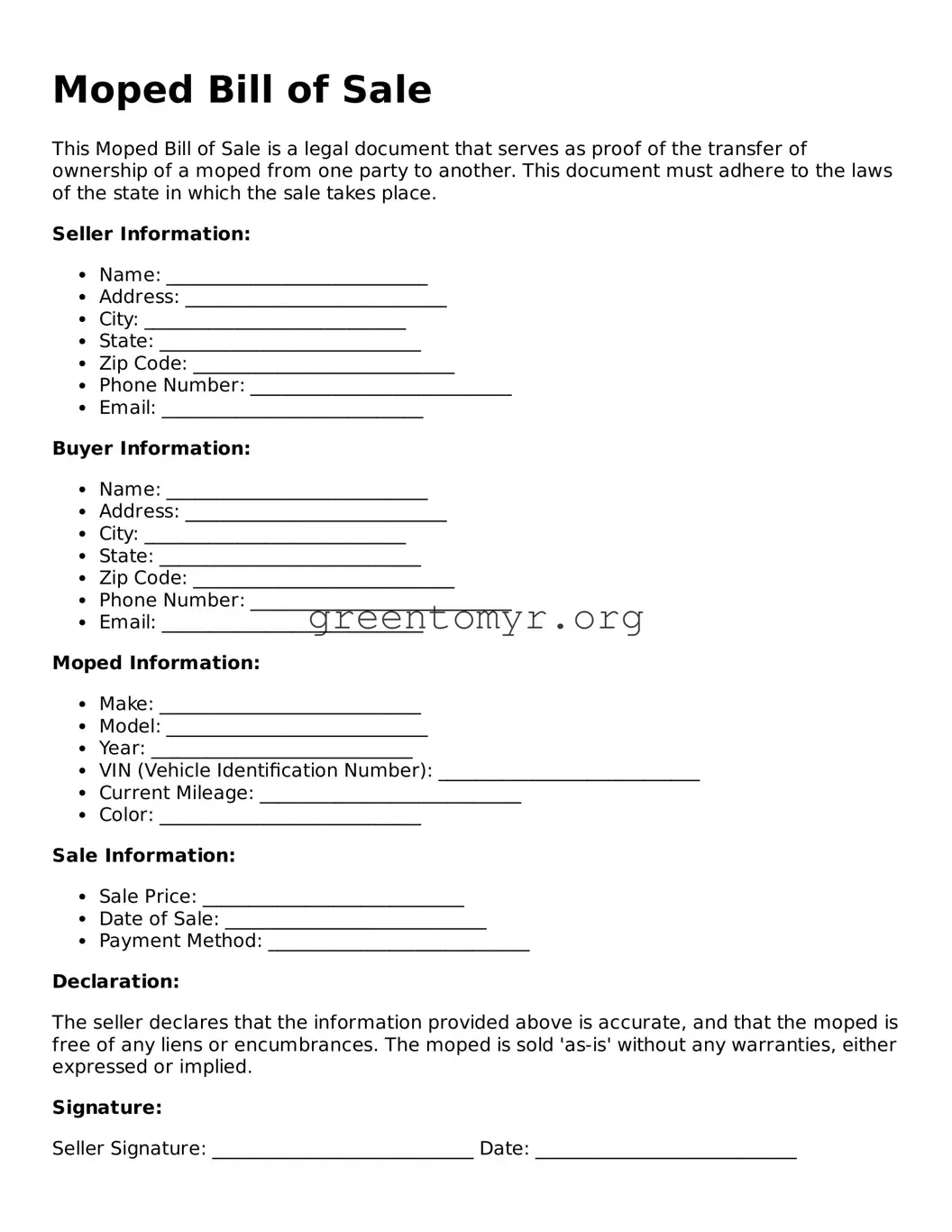Filling out a Moped Bill of Sale form can seem straightforward, but many people make common mistakes that can lead to complications. One frequent error is not providing complete buyer and seller information. Both parties need to include their full names and addresses. Missing this information can create confusion about ownership later.
Another mistake involves the incorrect or missing VIN (Vehicle Identification Number). The VIN is crucial for identifying the moped and ensuring it has not been stolen. Double-checking this number prevents issues when transferring ownership.
Omitting the sale price is also common. This detail is essential for record-keeping and may affect taxes. Specifying a clear and agreed-upon amount avoids misunderstandings between the buyer and seller.
Many individuals forget to date the form. A lack of date can lead to disputes over when the sale took place. Proper timing ensures that all parties are on the same page regarding the transaction.
Inaccurate descriptions of the moped can also cause complications. Details such as make, model, and year should be included. These elements help verify the specifics of the moped and are important for future transactions.
Not providing disclosures about the moped's condition is another oversight. Sellers should mention any known issues. This transparency promotes trust and can help avoid disputes after the sale is final.
Failing to sign the document is a critical error. Both the buyer and seller must sign the bill of sale for it to be valid. A missing signature can render the document worthless when it comes to proving ownership.
Sometimes, people neglect to keep a copy of the completed form. Having a record of the transaction is vital. Both parties should retain copies for their own files to reference if needed.
Some individuals mistakenly think a bill of sale is unnecessary when transferring a moped. This is incorrect. A properly completed bill of sale provides important legal protection and is often required for registration purposes.
Lastly, misunderstanding local laws regarding the bill of sale can lead to issues. Regulations vary by state. Researching the requirements in the local area ensures all guidelines are met, making the process smooth for both parties.
